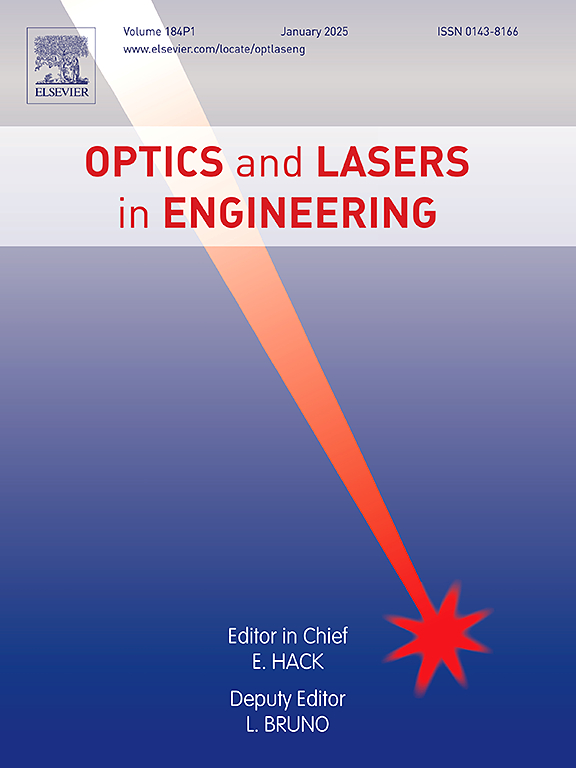High-bandwidth nonlinear curvature wavefront sensing based on dual-defocused scheme and optimal parameter selection
IF 3.5
2区 工程技术
Q2 OPTICS
引用次数: 0
Abstract
In adaptive optics, nonlinear curvature wavefront sensing (nlCWFS) has emerged as an effective tool in the challenging field of wavefront sensing due to its excellent sensitivity, dynamic range, and speed. Standard nlCWFS typically utilizes four intensity patterns acquired at four different defocused distances along the optical axis as amplitude constraints in numerical iterative algorithms to reconstruct the equivalent turbulence wavefront at the pupil plane. When the initial guess is far from the true phase, the iteration becomes time-consuming and may even converge to local optima. Besides, it also involves a highly complex for pupil image acquisition, and limits the system to achieve high temporal bandwidth when acquiring real-time pupil images in weak guide star scenarios. To alleviate the aforementioned issues in nlCWFS, we propose a highly robust wavefront sensing scheme with only two defocused intensity patterns. By using the wavefront phase obtained from the previous frame, the efficiency of iteration in nlCWFS can be significantly improved for the subsequent wavefront calculation. This method is capable of maintaining excellent wavefront sensing accuracy and speed even in under-sampling conditions with only two defocused images, thereby demonstrating its ability to reduce the burden on image acquisition and its potential for weak guide star applications. Additionally, we innovatively introduce the concept of a score-map to address the inherent challenge of optimal parameter selection in nlCWFS, enabling it and other similar wavefront sensing methods to adaptively adjust parameters and to achieve scenario-specific optimal performance dynamically.
基于双离焦方案和最优参数选择的高带宽非线性曲率波前传感
在自适应光学中,非线性曲率波前传感(nlCWFS)由于其优异的灵敏度、动态范围和速度,已成为具有挑战性的波前传感领域的有效工具。标准nlCWFS通常利用沿光轴在四种不同离焦距离处获得的四种强度模式作为数值迭代算法中的振幅约束来重建瞳面等效湍流波前。当初始猜测与真实阶段相差甚远时,迭代变得非常耗时,甚至可能收敛到局部最优。此外,它还涉及到瞳孔图像采集的高度复杂性,限制了系统在弱导星场景下获取实时瞳孔图像时的高时间带宽。为了缓解nlCWFS中的上述问题,我们提出了一种只有两个散焦强度模式的高鲁棒波前传感方案。利用前一帧得到的波前相位,可以显著提高nlCWFS的迭代效率,为后续的波前计算提供依据。该方法即使在只有两张散焦图像的欠采样条件下也能保持优异的波前传感精度和速度,从而证明了其减轻图像采集负担的能力和在弱导星应用中的潜力。此外,我们创新地引入了分数图的概念,以解决nlCWFS中最优参数选择的固有挑战,使其和其他类似的波前传感方法能够自适应地调整参数,并动态地实现特定场景的最优性能。
本文章由计算机程序翻译,如有差异,请以英文原文为准。
求助全文
约1分钟内获得全文
求助全文
来源期刊

Optics and Lasers in Engineering
工程技术-光学
CiteScore
8.90
自引率
8.70%
发文量
384
审稿时长
42 days
期刊介绍:
Optics and Lasers in Engineering aims at providing an international forum for the interchange of information on the development of optical techniques and laser technology in engineering. Emphasis is placed on contributions targeted at the practical use of methods and devices, the development and enhancement of solutions and new theoretical concepts for experimental methods.
Optics and Lasers in Engineering reflects the main areas in which optical methods are being used and developed for an engineering environment. Manuscripts should offer clear evidence of novelty and significance. Papers focusing on parameter optimization or computational issues are not suitable. Similarly, papers focussed on an application rather than the optical method fall outside the journal''s scope. The scope of the journal is defined to include the following:
-Optical Metrology-
Optical Methods for 3D visualization and virtual engineering-
Optical Techniques for Microsystems-
Imaging, Microscopy and Adaptive Optics-
Computational Imaging-
Laser methods in manufacturing-
Integrated optical and photonic sensors-
Optics and Photonics in Life Science-
Hyperspectral and spectroscopic methods-
Infrared and Terahertz techniques
 求助内容:
求助内容: 应助结果提醒方式:
应助结果提醒方式:


